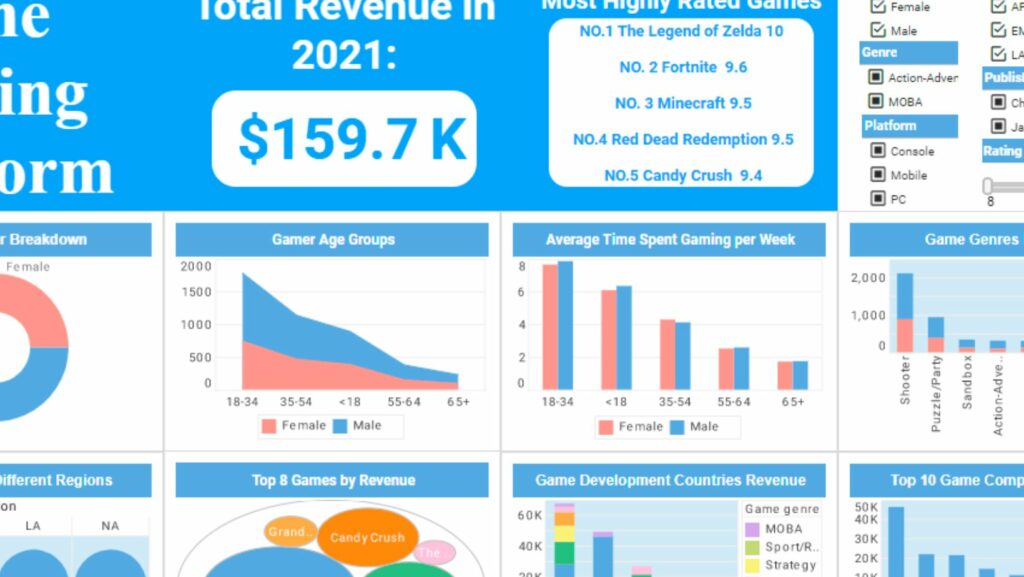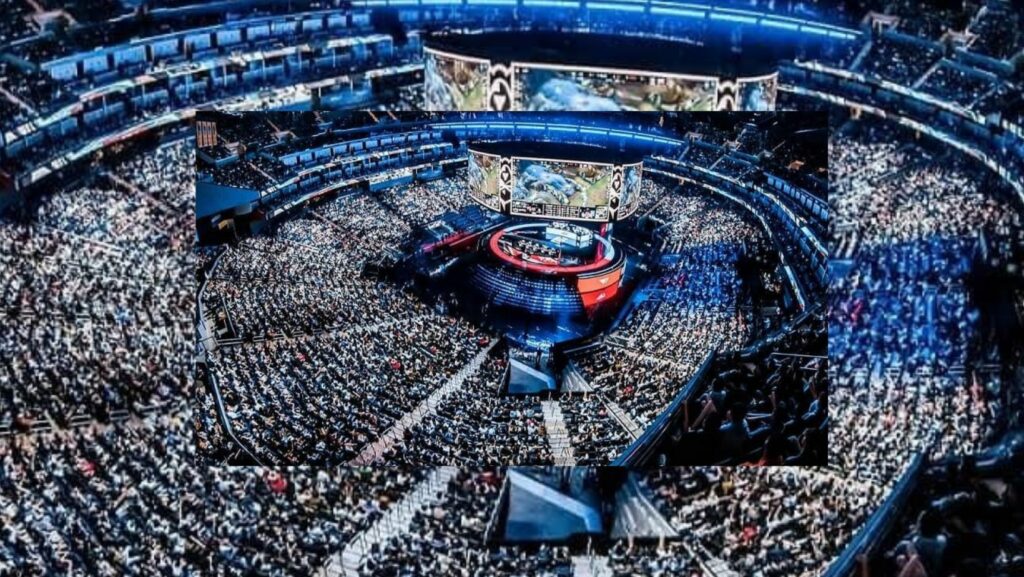Over the last fifteen years, esports has grown from small gatherings of dedicated gamers into a global cultural and economic phenomenon. This transformation has been powered not only by advances in technology but also by the creative use of digital marketing. As streaming platforms, social media, and influencer culture have become central to online life, they have also become the backbone of esports’ success. The synergy between esports and digital marketing has created a unique ecosystem where entertainment, competition, and commerce meet. Brands are no longer simply advertising to viewers—they are part of the community, integrated into the very identity of the events, players, and teams.
Digital marketing’s ability to engage audiences through personalization, storytelling, and interactive content perfectly matches esports’ dynamic, tech-oriented audience. Whether it’s a live-streamed championship viewed by millions or a viral TikTok clip showcasing a player’s skills, every moment becomes a marketing opportunity. The following sections explore how this connection between esports and digital marketing has evolved and why it continues to redefine the boundaries of global entertainment.
The Rise of Esports as a Marketing Powerhouse
The rise of esports as a marketing powerhouse is one of the most striking success stories of the digital era. In the early 2000s, competitive gaming was limited to small, localized tournaments. However, the rapid expansion of online platforms, high-speed internet, and streaming technologies transformed gaming into a spectator sport with audiences rivaling traditional sports leagues. Major events like the League of Legends World Championship, Dota 2’s The International, and CSGO Majors attract millions of concurrent viewers, generating enormous interest from advertisers seeking to reach younger demographics that traditional media struggles to engage.
In this new environment, digital marketing has become the lifeblood of esports. Social media campaigns, sponsorship activations, and in-game advertising all contribute to a seamless promotional ecosystem that resonates with fans. For example, during events such as worlds lol, brands craft narratives that intertwine with the competition itself. These narratives might include cinematic promotional videos, themed merchandise, or in-game collaborations that immerse the audience deeper into the world of esports. The goal is no longer just visibility—it’s connection.
Esports viewers are not passive consumers; they are interactive participants who expect authenticity, engagement, and emotional resonance. This is why digital marketing in esports differs so sharply from traditional advertising. Instead of static ads, marketers employ storytelling and experiential content, creating immersive campaigns that reflect the culture of gaming itself. As a result, esports events have become more than competitions—they are vibrant showcases of digital creativity and commercial synergy.
How Social Media and Streaming Platforms Drive Engagement
Social media has fundamentally transformed how esports is consumed and marketed. Platforms like X (formerly Twitter), Instagram, YouTube, and TikTok provide instant access to fans worldwide. Esports teams, organizations, and players use these channels not only to share updates but to build their personal brands, nurture fan relationships, and cultivate global communities.
The rise of streaming platforms such as Twitch, Kick, and YouTube Gaming has amplified this connection further. Viewers are no longer restricted to being spectators—they interact directly with players through live chats, polls, and community events. This level of interactivity is unmatched in traditional sports and represents a major reason why digital marketing thrives in esports.
Brands, too, benefit from this two-way engagement. When a sponsored player streams a game while using branded peripherals or discussing their partnership with authenticity, it feels organic rather than intrusive. This human connection turns marketing into an experience rather than an interruption. In essence, esports and social media marketing are inseparable—each fuels the other’s growth.
Another key aspect of engagement lies in user-generated content. Fans frequently produce memes, highlight reels, and fan art that spread virally across platforms, serving as free, community-driven promotion. Digital marketing campaigns that encourage such participation—through hashtags, contests, and challenges—extend the reach of esports far beyond the core audience. The result is a constantly evolving feedback loop of creation, engagement, and growth.
Sponsorships, Influencers, and Brand Partnerships
Sponsorship and influencer collaboration have become cornerstones of esports marketing. Unlike traditional advertising, where brands buy space or airtime, esports partnerships embed the brand within the experience itself. For instance, Red Bull’s sponsorship of player houses and events integrates the product into the lifestyle of gaming. Similarly, tech companies like Intel and NVIDIA use esports sponsorships to showcase the performance of their products directly to the most relevant audience.
Influencers and professional players serve as ambassadors for these brands, combining authenticity with broad reach. When a popular streamer or pro player endorses a brand, it feels like a recommendation from a trusted friend rather than a sales pitch. This trust translates into tangible results—higher brand recall, stronger emotional connections, and increased conversions.
The diversity of sponsorship types in esports also contributes to its marketing strength. From hardware manufacturers and software developers to fashion brands and energy drink companies, every partnership represents a fusion of lifestyle and culture. For example, the collaboration between Gucci and Fnatic introduced luxury fashion into gaming culture, symbolizing how esports has transcended its niche origins.
Furthermore, digital marketing enables precise measurement of these sponsorships’ effectiveness. Brands can track engagement metrics, clicks, conversions, and audience sentiment in real time, allowing for agile campaign adjustments. This data-driven approach ensures that marketing budgets are used efficiently while maximizing return on investment.
Data-Driven Marketing: Understanding the Esports Audience
Data analytics is the invisible engine behind esports marketing success. Every stream, click, and interaction generates valuable insights into viewer behavior. Marketers can analyze this data to identify audience preferences, peak engagement times, and trending content formats. By leveraging such insights, they craft hyper-personalized campaigns that reach the right people at the right time with the right message.
Machine learning and AI tools further enhance this process. Predictive analytics can forecast viewership spikes for major tournaments or identify potential influencers before they go mainstream. Brands can also segment audiences by interest, location, and spending habits, enabling them to create tailored offers and promotions. For instance, a gaming hardware company might target competitive players with product bundles optimized for performance, while casual gamers receive promotions emphasizing comfort and accessibility.

Moreover, this data-driven approach helps maintain long-term engagement. Esports fans are often highly loyal to teams and players, and marketers use behavioral data to reward that loyalty through exclusive digital content, limited-edition merchandise, and community-driven experiences. Ultimately, understanding the esports audience on a granular level is what allows digital marketing to remain both effective and authentic.
Challenges and Future Directions in Esports Marketing
Despite the remarkable synergy between esports and digital marketing, the industry faces ongoing challenges. Oversaturation of sponsorships and advertisements can lead to audience fatigue, especially among younger viewers who value authenticity. Ethical concerns, such as unclear sponsorship disclosures and gambling-related promotions, also require careful management to maintain trust.
Another major hurdle is localization. Esports is a global industry, and what works in one region may fail in another. Successful campaigns must account for cultural nuances, language differences, and local regulations. This makes international marketing both complex and essential.
Looking forward, the future of esports marketing lies in innovation. Technologies such as augmented reality (AR), virtual reality (VR), and mixed reality (MR) will create new opportunities for immersive fan experiences. Imagine fans watching a live match with real-time 3D overlays of player stats or exploring virtual arenas filled with branded interactive zones.
Additionally, the growing integration of blockchain technology may revolutionize fan engagement through digital collectibles and tokenized rewards. As these innovations emerge, digital marketing strategies will need to adapt—embracing creativity, transparency, and inclusivity as the guiding principles of esports’ next chapter.
Conclusion
Digital marketing and esports have evolved together, feeding off each other’s momentum. Marketing has transformed esports from a hobby into a cultural and commercial phenomenon, while esports has given marketing professionals a new, interactive medium for reaching global audiences. Through social media, sponsorships, influencer collaborations, and data-driven strategies, digital marketing has redefined how fans interact with competitive gaming.
As technology advances, the link between digital marketing and esports will only deepen. The industry’s future will depend on maintaining authenticity, embracing innovation, and using data responsibly. What began as a partnership of opportunity has become a blueprint for how modern entertainment industries can thrive in the digital age. Esports is not merely the future of gaming—it is the future of marketing itself.

